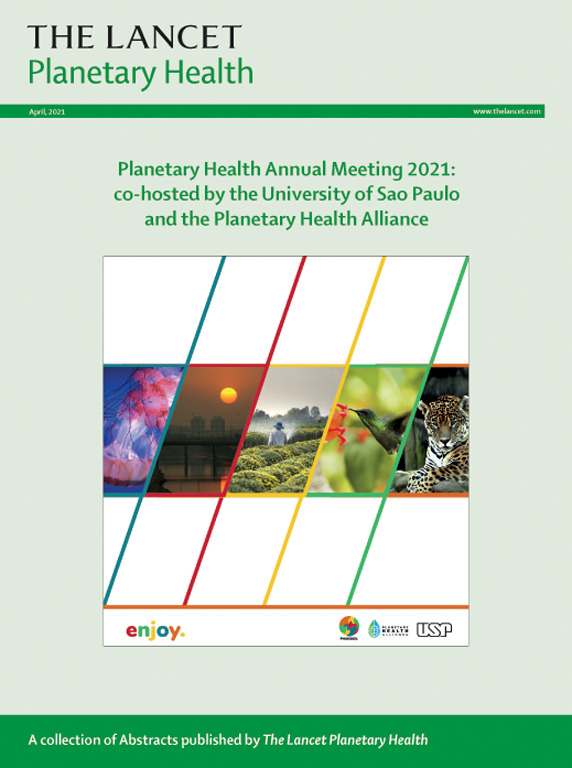Future-proofing cities against negative city mobility and public health impacts of impending natural hazards: a system dynamics modelling study
IF 24.1
1区 医学
Q1 ENVIRONMENTAL SCIENCES
引用次数: 0
Abstract
Background
The world faces increasing risk from more frequent and larger scale natural hazards, including infectious disease outbreaks (IDOs) and climate change-related extreme weather events (EWEs). These natural hazards are expected to have adverse mobility and public health impacts, with people living in cities especially vulnerable. Little is known about how transport systems can be optimally designed to make cities more resilient to these hazards. Our aim was to investigate how cities’ transport systems, and their resulting mobility patterns, affect their capabilities to mitigate mobility and health impacts of future large-scale IDOs and EWEs.
Methods
System dynamics modelling was used to investigate how different city mobility scenarios can affect the health and mobility impacts of four plausible future IDO and EWE (flooding) shocks in three cities: Belfast, UK; Belo Horizonte, Brazil; and Delhi, India. Three city mobility scenarios with incremental degrees of modal shift towards active travel (private motor vehicle volume reduced to 50% and 20% of total road trip volume in vision 1 and 2, and motor vehicle volume [including buses] reduced to 20% of total road trip volume in vision 3) were tested. For each city and each IDO and EWE shock, we estimated the percentage of deaths prevented in visions 1, 2, and 3, relative to the reference scenario, as well as changes in mode share over time.
Findings
In all scenarios, all cities showed reduced susceptibility to flooding, with 4–50% of deaths potentially prevented, depending on case city, city mobility, and EWE scenario. The more ambitious the transition towards healthier city mobility patterns, the greater the resilience against flooding. Only vision 3 (the most ambitious transition) showed reduced vulnerability to IDOs, with 6–19% of deaths potentially prevented. Evolution of mode shares varied greatly across cities and mobility scenarios under the IDO shocks.
Interpretation
Our results emphasise the importance of well designed, forward-thinking urban transport systems that make cities more resilient and reduce the impact of future public health-related and climate-related threats.
Funding
UK Prevention Research Partnership, UK Economic and Social Research Council, UK Medical Research Council, UK National Institute for Health and Care Research, Australian Research Council, Australian National Health and Medical Research Council, and Health and Social Care Research and Development Office Northern Ireland.
面向未来的城市,应对迫在眉睫的自然灾害对城市流动性和公共卫生的负面影响:一项系统动力学建模研究
世界面临着越来越多的风险,包括更频繁和更大规模的自然灾害,包括传染病暴发(IDOs)和与气候变化有关的极端天气事件(ewe)。预计这些自然灾害将对流动性和公共卫生产生不利影响,城市居民尤其容易受到影响。对于如何优化设计交通系统,使城市更能抵御这些危险,人们知之甚少。我们的目的是调查城市的交通系统及其产生的流动性模式如何影响城市减轻未来大规模ipo和ewe对流动性和健康影响的能力。方法采用系统动力学模型研究了不同的城市流动性情景如何影响未来四种可能的IDO和EWE(洪水)冲击对健康和流动性的影响:英国贝尔法斯特;巴西贝洛奥里藏特;以及印度的德里。测试了三种模式向主动出行转变程度递增的城市交通场景(在愿景1和愿景2中,私人机动车数量减少到总道路出行量的50%和20%,在愿景3中,机动车数量(包括公交车)减少到总道路出行量的20%)。对于每个城市和每个IDO和EWE冲击,我们估计了相对于参考情景,愿景1、2和3中预防的死亡百分比,以及模式份额随时间的变化。在所有情景中,所有城市都表现出对洪水的易感性降低,根据案例城市、城市流动性和EWE情景,有可能预防4-50%的死亡。向更健康的城市交通模式过渡的目标越远大,抵御洪水的能力就越强。只有愿景3(最雄心勃勃的转型)显示,对ido的脆弱性有所降低,有可能预防6-19%的死亡。在IDO冲击下,不同城市和不同出行场景的模式共享演化差异很大。我们的研究结果强调了设计良好、具有前瞻性的城市交通系统的重要性,它使城市更具弹性,并减少未来公共卫生和气候相关威胁的影响。资助联合王国预防研究伙伴关系、联合王国经济和社会研究理事会、联合王国医学研究理事会、联合王国国家卫生和保健研究所、澳大利亚研究理事会、澳大利亚国家卫生和医学研究理事会以及北爱尔兰卫生和社会保健研究和发展办公室。
本文章由计算机程序翻译,如有差异,请以英文原文为准。
求助全文
约1分钟内获得全文
求助全文
来源期刊

Lancet Planetary Health
Multiple-
CiteScore
28.40
自引率
2.30%
发文量
272
审稿时长
8 weeks
期刊介绍:
The Lancet Planetary Health is a gold Open Access journal dedicated to investigating and addressing the multifaceted determinants of healthy human civilizations and their impact on natural systems. Positioned as a key player in sustainable development, the journal covers a broad, interdisciplinary scope, encompassing areas such as poverty, nutrition, gender equity, water and sanitation, energy, economic growth, industrialization, inequality, urbanization, human consumption and production, climate change, ocean health, land use, peace, and justice.
With a commitment to publishing high-quality research, comment, and correspondence, it aims to be the leading journal for sustainable development in the face of unprecedented dangers and threats.
 求助内容:
求助内容: 应助结果提醒方式:
应助结果提醒方式:


